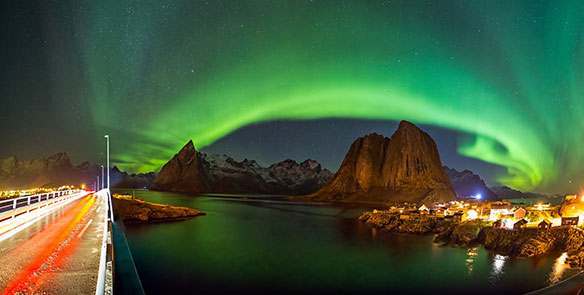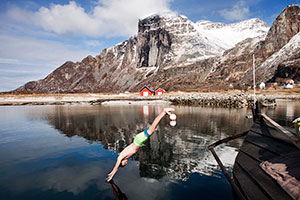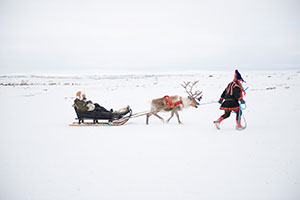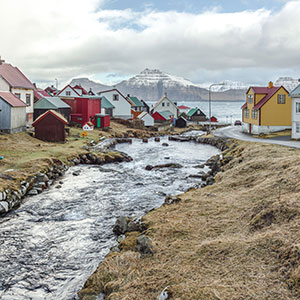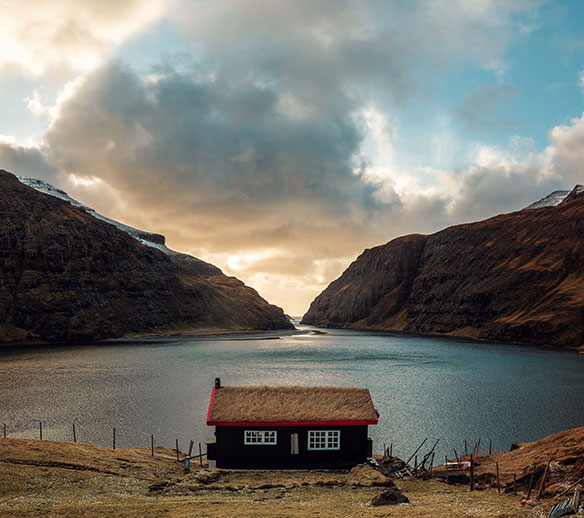
The next big thing
Travel industry experts reveal top travel trends
ANN RUPPENSTEIN
(Photo above courtesy of Alex Conu/ Visit Norway)
Millennials may not have as much money as Baby Boomers, but according to Diana Ditto, director of product design at Collette, this cohort changed the face of travel today.
“They were the ones that created this experience economy. They demanded and still do demand authentic experiences. In designing product now, the traveller is so changed,” she says. “We used to passively experience destinations and be absolutely fine with that, and now travellers want to actively engage with the destinations that they’re visiting – they don’t just want to eat the food, they want to learn how to make it, they want to be in the kitchen. They want to go see a palace and then they want to see the guide, who is touring them around the palace, where he lives, what he does day to day.”
Speaking on a panel discussion on Travel Is More Than Just A Destination: Predicting Hot Destinations & Trends Before They Happen, Ditto was joined by other industry experts to weigh in on travel trends at The Future Of Travel 2018 Global Forum recently held in Providence, Rhode Island. Here are a few takeaways about what’s in store for the travel industry:
The next big thing
According to Bryan Kinkade, VP, Publisher, AFAR Media, some of the places resonating with its one million digital readers are Japan and Scandinavia.
“Portugal is at the top of the list – for the last year,” he adds. “Another hot destination – Egypt, from everything we’re hearing, is poised for a comeback in the months and years ahead.”
Meet the new Iceland
For Norma Dean, director – specialty sales at Delta Air Lines, after noting the success of Iceland, the airline looked at where else they could service and landed on the Azores.
“They’re kind of similar in that they’re geotourism and ecotourism, there’s a set demographic that really likes hiking around, I went for the food,” she says.
Over at AFAR, for the same reason that Iceland is of interest, Kinkade says travellers are seeking out the Faroe Islands, an archipelago between Iceland and Norway.
“It’s new, it’s a frontier, it allows you for bragging rights, the culinary scene there is untouched,” he says. “Very real, authentic. I think continuing to find those places where it’s new on people’s radars, really offers an opportunity for a unique experience.”
Old is new
As much as travellers are searching for off-the-beaten path places to go, there are some classic destinations that will always resonate, but people are looking to explore them in new ways.
“We’ve seen Paris always will resonate with our audience, regardless of how intrepid they are looking for far-flung destinations, they’re still going to go to Paris, they’re still going to go to Ireland, but they want to do it in a new way,” says Kinkade. “We did an article two years ago on Ethiopian immigrant neighbourhoods outside of Paris with amazing culinary nightlife, and that resonates because again they’re going to be there and they want to see something new, they want to experience something new.”
I’ll take seconds, please
On a similar front, Ditto points out they’ve seen a big rise in secondary destinations. For example in Switzerland, instead of just going to Lucerne, the tour operator takes in smaller towns like Vevey on Lake Geneva.
“As people go back and travel to Europe becomes more accessible, they can go anywhere on the map, that’s the new reality,” she says. “We’re seeing these secondary cities pop out of the woodwork, and it’s really exciting with the experiences that you can have there.”
Another option in Switzerland is Neuchâtel, which isn’t far from the France border.
“We’re now spending three nights in this incredible city,” she says. “If you ask most people have you been to Switzerland, have you been to Neuchâtel, most people will say no, I’ve never heard of it. Swiss people, they haven’t even gone here. It’s so special, experiential and authentic.”
Flying solo
“Some of the themes we’re seeing across Portugal, Scandinavia and other destinations: solo travel continues to be relevant,” says Kinkade.
It’s all about unique experiences
In an information age, it’s becoming more of a challenge for tour operators to facilitate authentic and brag-worthy local experiences in a destination. For Ditto, this means spending a lot of time on the road, questioning and talking to locals to suss out some unique things to do.
“The process is huge, you really need to go there to experience things,” she says. “Even now looking at a tour in Russia, it seems pretty straightforward the things that you do, Moscow and Saint Petersburg, a palace, the Kremlin, yeah we could do that, but how do you get on the ground and find new ways to explore to get the exact same experience and that’s how we innovate.”
Peter Greenberg, CBS News Travel Editor points out that everyone wants bragging rights.
“No one needs to be told about the Eiffel Tower, however, if I befriend the guy who turns on the lights at 10 p.m. and you can be there with him, now that’s it.”
Get unplugged
Another growing trend is for travelling unplugged.
“I took my family to Mexico and it completely changed the way you approach the destination, the way you interact with each other, and I think it’s really an important part of travel,” Kinkade says. “[I lasted] four days straight and then I broke down.”
Combating over tourism
Since people still want to head to places that are becoming increasingly popular among visitors such as Venice, Ditto says it’s all about going off-season or optimizing the time of day.
“One thing we’re seeing a rise in is off-season travel and experiencing cities at night, or first thing in the morning, sunrise over cities has become big,” she says.
Flight factors
When it comes to adding new routes, Dean says Delta typically looks at if they have the aircraft, how profitable the traffic flow will be, if there are demand influencers and what passenger behaviour tells them.
“Then we have all this data – we service 160 million passengers a year to over 300 destinations, and we look at this and say so what are we serving that really is trending?” she says. “As opposed to in the last couple of years when we started a destination like Cuba, and we had to look at what are the operational restraints of operating in Cuba, which is a totally different animal. It was a shiny penny, and we knew that when the doors opened we needed to have a foot in the door.”
Overcoming fear
At AFAR, Kinkade says there are travellers who are open to going to places in need and places in transition in the wake of world events or natural disasters.
“We have a mantra at AFAR: fear less, travel more,” he says. “Like Puerto Rico after the hurricane and the importance of tourism there and seeing first-hand the impact your dollars can make.”
“It’s almost my philosophy, that the best time to go anywhere is after a serious disturbance or natural disaster,” adds Greenberg. “And the reason for that is the people are thrilled to see you. I’m not talking about first responders, but when things have settled down, but the fear factor is still remaining, that’s the time to go because the people will want to see you, you will get unbelievable service, not to mention a great experience.”
(Photo below courtesy of Christoffer Collin/ Visit Faroe Islands)

